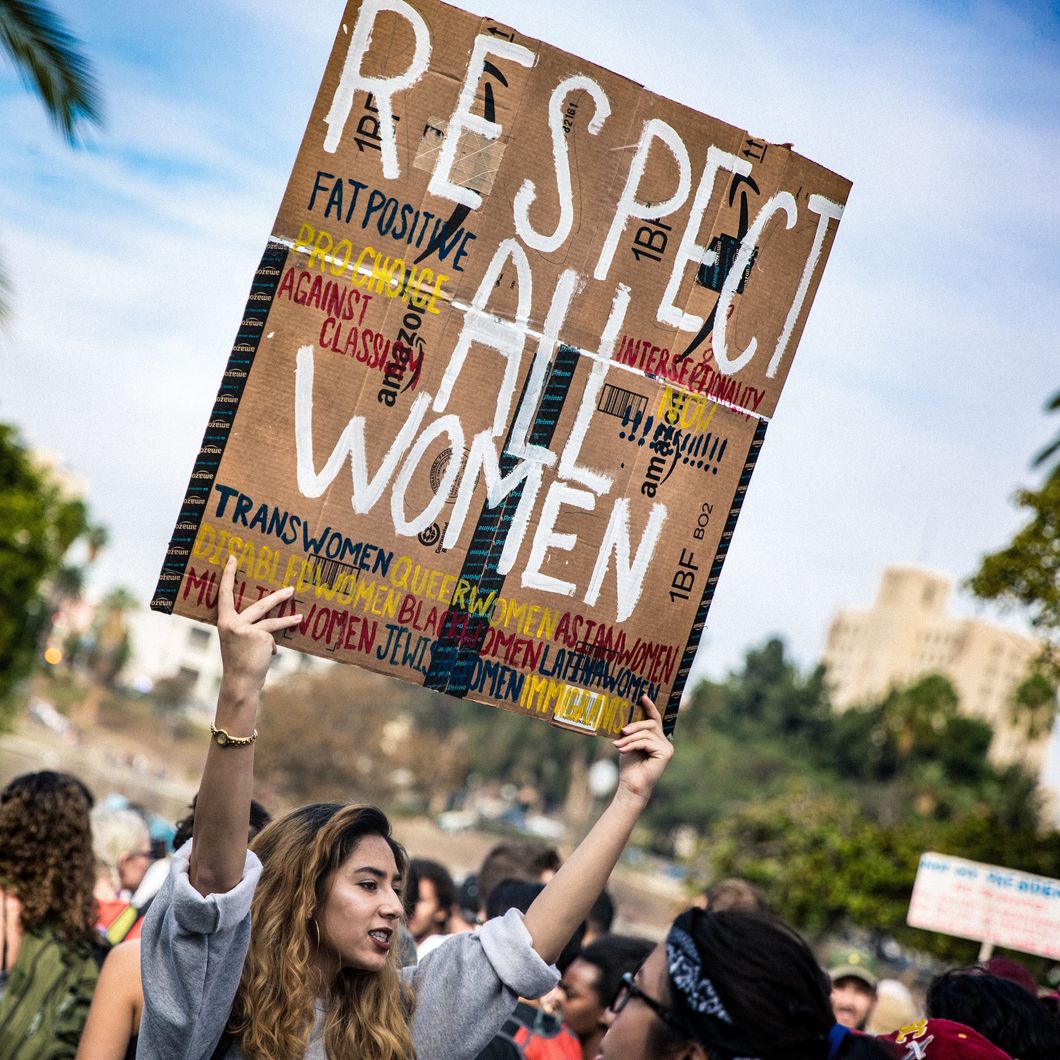Throughout my time as a self-identified feminist, I've encountered a lot of people who have claimed that though they supported the initial feminist movement(s), they didn't care for what feminism has "turned into" today. Some common explanations of this are that today's feminists "hate men," largely identify with the left side of the political spectrum, and are simply "too sensitive."
Respectfully, however, I believe that this outlook on today's feminism stems from a large misconception about what third and fourth-wave feminism really is and what it stands for. And, of course, the first two waves were the first huge steps for women's rights, specifically involving giving us the right to vote and reproductive rights. But there has been a crucial aspect added to feminism since the first two movements (and even the third, which dates back to the 1990s): intersectionality. Intersectional feminism entails the inclusion of multiple marginalized communities within the feminist movement and the acknowledgment of their intersections with sexism and misogyny. So, for the critics of modern-day feminism, here are the communities that today's feminist movement includes that the original movements, for the most part, left behind:
1. People of color
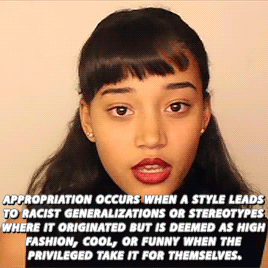
Actress and activist Amandla Stenberg taking a stand against cultural appropriation.
GiphyElizabeth Cady Stanton and Susan B. Anthony are usually the two women that first come to our minds when we think of the first feminist movement. Along with their advocacy for women's suffrage, they also supported the abolition of slavery—so they couldn't have been racist, right?
Wrong. Though two of the biggest leaders of the first wave supported the abolition of slavery, they also willingly worked alongside racist white men to gain more rights for (white) women, and Anthony infamously expressed her disgust at the idea of black men being able to vote and not women. Likewise, second-wave feminism was still dominated by white women and really only brought the voices of irritated white housewives to the forefront of discussion when it came to women's rights.
Today's feminism, however, has made a drastic improvement in the inclusion of people (specifically women) of color. Anyone who's a true feminist will tell you that the experiences of white women aren't as difficult as those of women of color, because of women of color experience racism along with sexism and misogyny. Celebrities such as Beyoncé, Laverne Cox, Amandla Stenberg, and Mindy Kaling (among many more) have also greatly helped to include people of color in the feminist narrative.
2. The LGBTQ+ Community
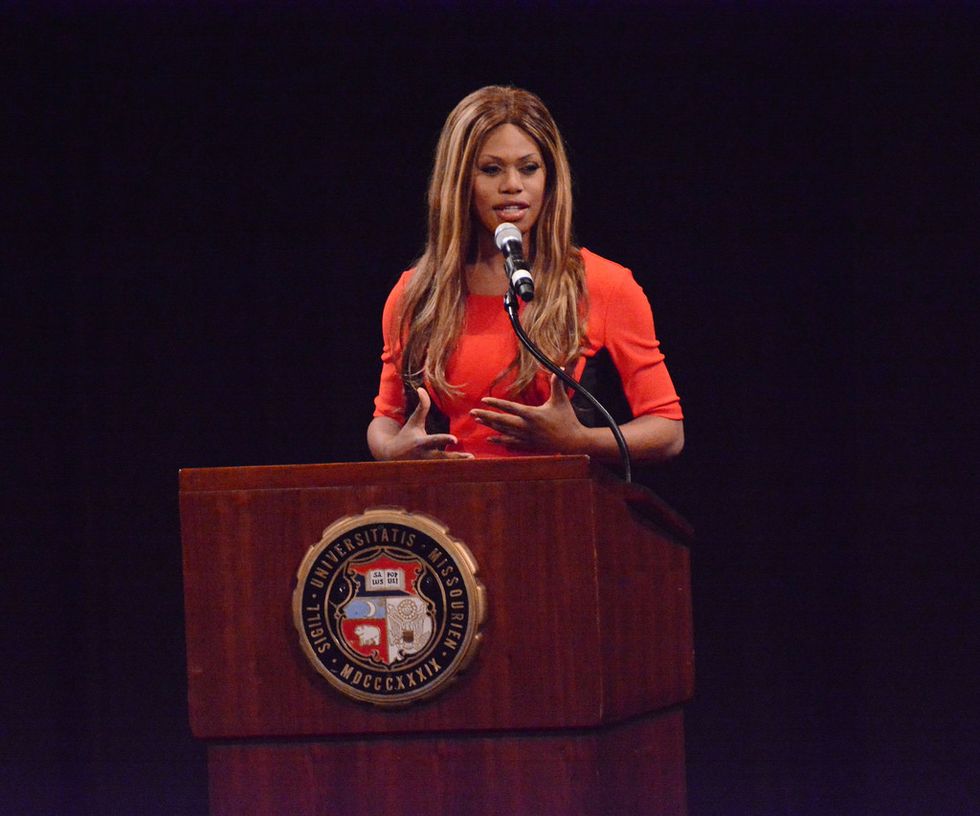
Actress and activist Laverne Cox
Rights for the LGBTQ+ community weren't really brought to much public discussion in the United States until the 1960s, and even then, they weren't part of the feminist movement as a whole. Advocacy for women's rights and advocacy for gay rights weren't nearly as intertwined during second-wave feminism as they are today. Today, the struggles of members of the LGBTQ+ community are widely recognized within the feminist movement, especially with famous advocates such as Ellen DeGeneres and Laverne Cox.
3. Muslims, Jews and other members of non-Christianity religions
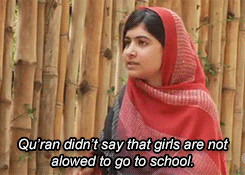
Activist Malala Yousafzai
GiphyThe white, middle-to-upper-class housewives that dominated the first two feminist movements were also typically Christian in their faith. Today, however, there has been much more diverse religious representation within the movement. Much of this has included activism against Islamophobia and anti-semitism.
4. People with disabilities
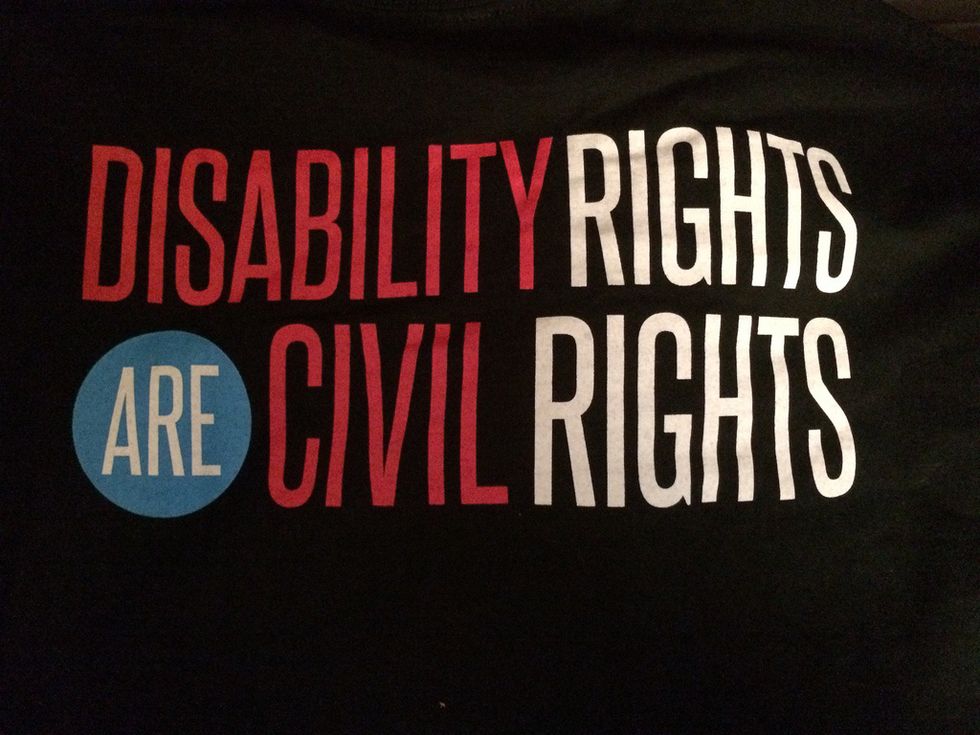
Though the disabled community is still underrepresented, they are definitely much more present in today's feminism than in the first two waves. This is especially thanks to the fourth wave's social media platform, which has allowed for a very accessible outlet for activism. It's much easier for those with physical disabilities (as it is for anyone, really) to participate in the feminist discussion from Twitter than to attend every march or protest organized. This has allowed for many more of these voices to be heard within the feminist movement, especially in terms of pushing for more inclusive legislation for folks (especially women) with disabilities.
5. Low income individuals

The acknowledgment of how different income brackets affect women has become a much bigger discussion with fourth-wave feminism. Many feminists today are even identifying as anti-capitalists and exposing the ways in which capitalism exploits poor women. Feminism is no longer a fight for middle-to-upper-class women to achieve equality with men, but for lower-class women as well. This is especially reflected in many feminists' support of increasing the minimum wage and more government funding for relief programs among other legislation.
All in all, feminism has evolved into a much bigger movement from its beginning with women's suffrage in the late 1800s. And, while women today definitely have trail-blazers such as Elizabeth Cady Stanton and Margaret Sanger to thank for making the first giant steps towards gender equality, there are definitely many people that they intentionally left out of the movement. The involvement of people of color, people with disabilities, the LGBTQ+ community, lower-income women, and people with different religious backgrounds have ultimately changed feminism for the better. People from all of these groups have helped feminism transform into the movement it is today so that feminism is no longer just a movement middle-class, able-bodied, straight, Christian white women. Instead, it's an all-inclusive fight for the civil rights of every marginalized group that needs it.
So the next time you find yourself questioning the validity of what feminism is today, ask yourself: was feminism really better back in the day, when it excluded anyone who wasn't white, straight, abled, well-off, or Christian?

